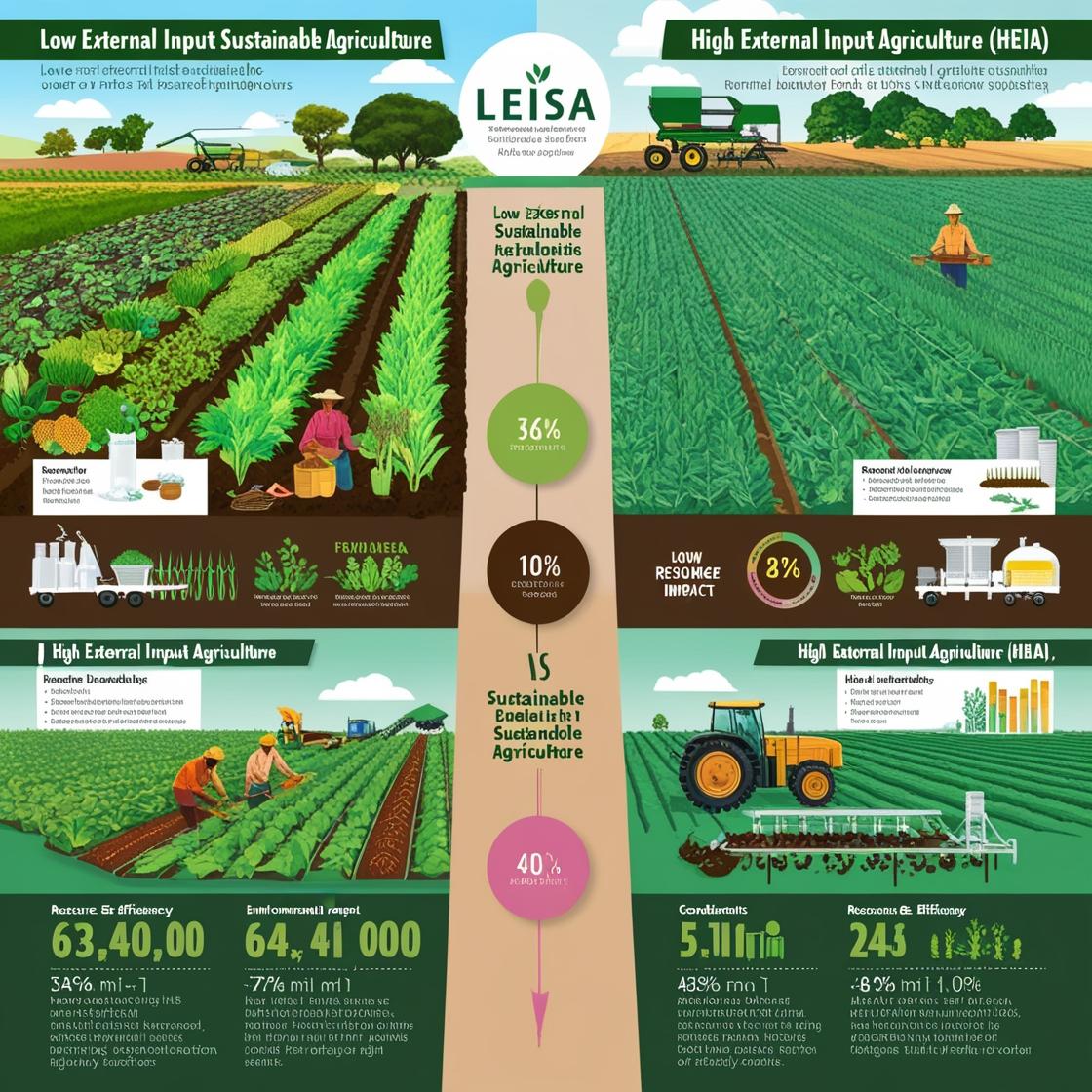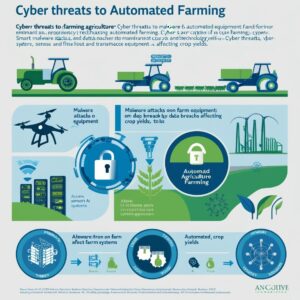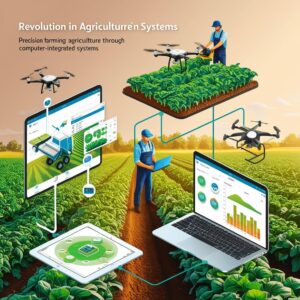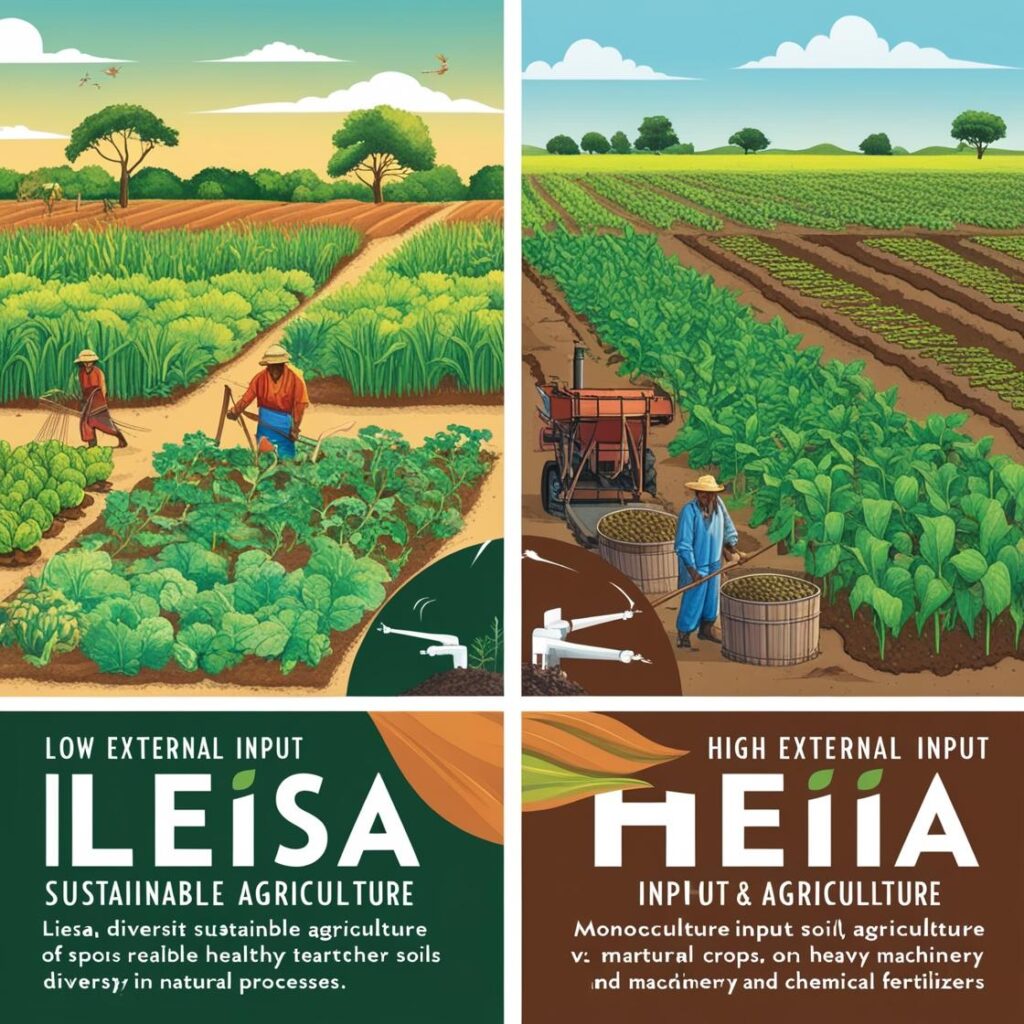
The growing interest in sustainable farming practices has turned a spotlight on Low External Input and Sustainable Agriculture (LEISA). Developed as an alternative to the Green Revolution’s high-input methods, LEISA promotes a more resource-efficient and ecologically friendly farming approach. But what sets LEISA apart from High External Input Agriculture (HEIA)? Let’s dive into the key concepts, techniques, and benefits of each approach, so you can make informed choices or just appreciate the innovation within modern agriculture.
What is LEISA?
LEISA, short for Low External Input Sustainable Agriculture, emphasizes minimal reliance on external resources like chemicals, fertilizers, and irrigation, aiming instead to optimize the use of locally available resources and boost the natural synergy between different elements in farming. LEISA doesn’t eliminate external inputs entirely but encourages responsible use to maintain yields. By focusing on sustainability, it offers small-scale farmers a practical and resourceful way to enhance income without compromising environmental health.
Principles of LEISA: Four Pillars
- Soil Health: Nurturing the soil is central to LEISA. By managing organic matter, LEISA methods ensure that soil remains fertile and alive with nutrients, making it an ideal medium for plant growth.
- Nutrient Management: LEISA promotes a balanced nutrient flow, using techniques like nitrogen fixation and selective fertilizer application to minimize chemical dependency.
- Pest Management: Instead of heavy pesticide use, LEISA encourages integrated pest management (IPM) and prevention-based strategies to reduce pest impact on crops.
- Climate and Water Management: LEISA uses microclimate and water management tactics, such as erosion control and soil moisture retention, to ensure that crops thrive with minimal water and energy input.
These principles guide LEISA farmers in creating a harmonious and sustainable ecosystem where productivity and ecological balance go hand-in-hand.
High External Input Agriculture (HEIA): The Conventional Approach
In contrast, High External Input Agriculture (HEIA) relies heavily on external resources—chemical fertilizers, pesticides, irrigation, and mechanization. This method is often associated with higher yields, rapid crop growth, and mechanized efficiency. While it has significantly increased food production to meet growing demand, HEIA has also introduced several challenges:
- Environmental Strain: Overuse of pesticides and chemicals can disrupt natural ecosystems, harming beneficial insects and soil microorganisms.
- Soil Erosion and Degradation: Intensive tilling and mechanized farming can lead to soil compaction and erosion, which, over time, reduce soil fertility.
- Increased Costs: Constant need for external inputs like hybrid seeds, fertilizers, and machinery can strain farmers financially, especially small-scale farmers.
Despite these issues, HEIA has its advantages, especially for large-scale operations seeking fast, profitable yields. However, these benefits often come with long-term environmental and economic costs.
LEISA Techniques: Building a Sustainable Future
- Living Soil: LEISA emphasizes soil health by promoting practices such as growing nitrogen-fixing legumes, using green manure, and minimizing tillage. A living soil teeming with beneficial microorganisms not only enhances nutrient availability but also improves water retention, benefiting crop resilience.
- Biodiversity: Crop diversity strengthens resilience against pests and environmental stressors. LEISA encourages intercropping, integrating various plant species, and using beneficial plants like trees for windbreaks or flowering plants that attract pest-controlling insects.
- Water Management: With competition for water on the rise, LEISA optimizes water use through techniques like mulching, reduced soil disturbance, and water-harvesting systems. These methods not only reduce water wastage but also support off-season cash crop production, enhancing farm income.
- Renewable Energy: Instead of relying solely on fossil fuels, LEISA promotes renewable energy sources like bio-digesters, solar devices, and small-scale hydropower. These alternatives support sustainable energy use for irrigation, processing, and heating.
- Animal-Plant Synergy: By optimizing the interactions between animals, plants, and soil, LEISA ensures that all elements within the farm complement one another. For example, integrating livestock into crop systems can enhance soil fertility and provide organic waste for composting, creating a self-sustaining system.
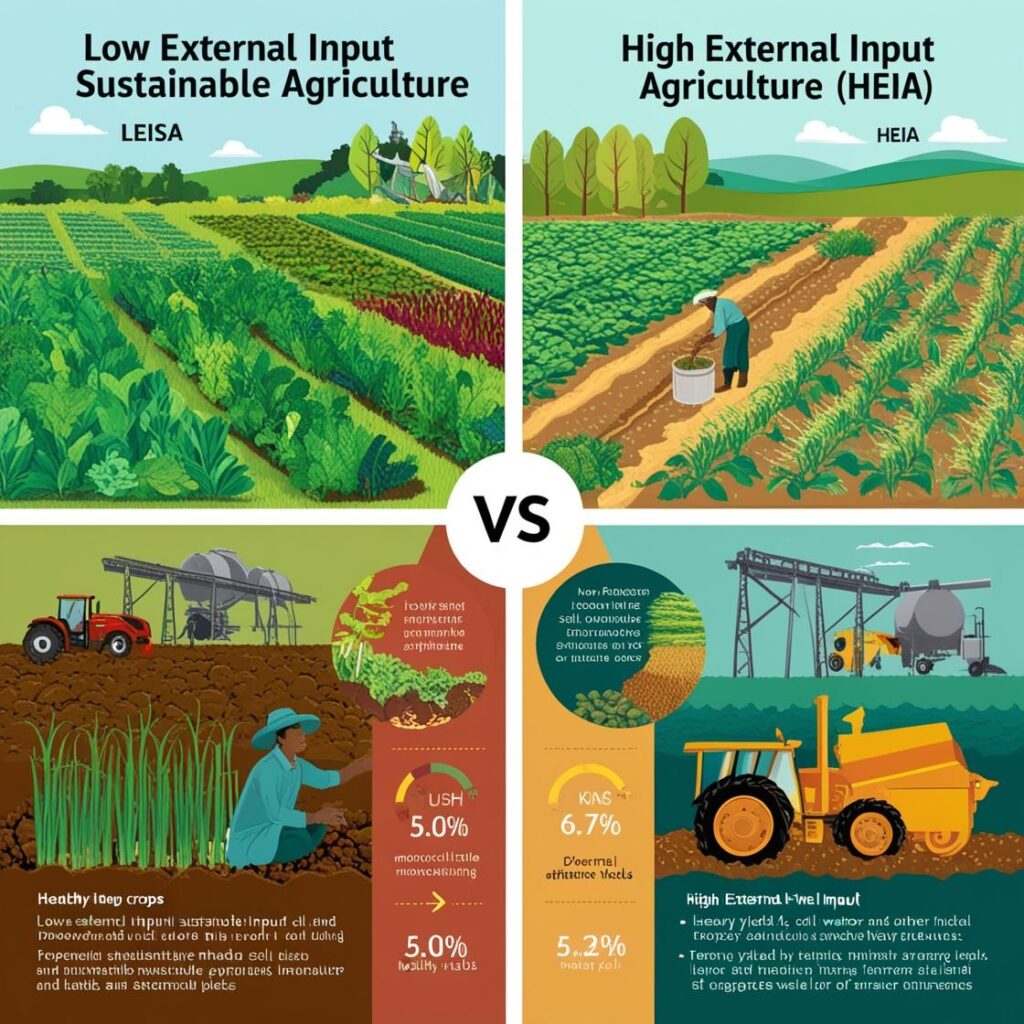
Actionable Tips for LEISA Implementation
- Start with Soil Health: Prioritize organic soil amendments like compost or green manure and avoid excessive tilling to maintain structure.
- Embrace Biodiversity: Experiment with intercropping to create a more resilient system. Include trees or flowering plants that benefit crops.
- Harvest Rainwater: Implement water-saving techniques and consider building a small pond or water-harvesting system.
- Use Local Resources First: Reduce dependency on costly fertilizers and pesticides by leveraging local organic materials.
Key Differences Between LEISA and HEIA
| Characteristics | HEIA | LEISA |
|---|---|---|
| Dependence on External Inputs | Heavy reliance on chemicals, hybrid seeds, and fossil fuel-based mechanization. | Minimal use of external inputs, focuses on natural processes and local resources. |
| Focus on Yields | Maximizes yields with extensive chemical input and specialization. | Prioritizes long-term sustainability over short-term yield maximization. |
| Environmental Impact | Causes environmental degradation, loss of biodiversity, and soil erosion. | Enhances ecological balance, soil health, and biodiversity. |
| Economic Feasibility | High cost and input-driven, accessible mainly to large-scale farmers. | Low-cost, labor-intensive, and accessible to small farmers. |
| Social Impact | Increases dependency on purchased inputs and external expertise. | Supports local knowledge and fosters independence, especially for small farmers. |
Summary for Instagram Reels & Canva Infographics:
- Introduction: Highlight LEISA’s benefits in sustainable farming and contrast with HEIA.
- Key Principles of LEISA: Soil health, nutrient and pest management, water efficiency, biodiversity.
- Top LEISA Practices: Cover crops, intercropping, rainwater harvesting, renewable energy sources.
- Pros and Cons of HEIA: Fast yields and mechanization vs. long-term environmental costs.
- LEISA vs. HEIA Comparison: Show in tabular form for easy understanding.
Incorporating LEISA can be a game-changer for sustainable farming. Through careful management and community knowledge, farmers worldwide can build resilient, productive, and sustainable systems that respect both the environment and their resources.
This passage covers various sustainable agricultural practices and the integration of crop-livestock systems to create more ecologically friendly farming models. Some of the key highlights include:
- Resource-based Integrated Crop-Livestock Systems: In industrialized systems, livestock often consume large portions of grain meant for human food. Alternatives, especially in tropical countries, involve integrating livestock with crops that do not compete with human food, using locally available plants like sugarcane and cassava.
- LEISA Techniques and Practices: These practices focus on low-external-input sustainable agriculture by enhancing soil health and crop resilience. They include careful nutrient management to ensure soil fertility while minimizing environmental impact.
- Mineral and Organic Fertilizers: A balanced approach, using both mineral and organic fertilizers, can sustain soil fertility. Organic manures, like composted animal waste, improve soil structure, water retention, and microbial health.
- Residue Management and Conservation Tillage: Leaving crop residues on fields helps prevent soil erosion and promotes soil moisture retention, thus supporting a sustainable tillage system with minimal disturbance to the soil.
- Green Manuring and Cover Crops: Using plants like legumes as green manure adds nitrogen and organic matter to the soil. Cover crops prevent nutrient leaching, reduce erosion, and suppress weeds.
- Mulching: This technique, involving organic or synthetic cover materials, helps regulate soil temperature, prevent erosion, and maintain soil moisture, further supporting soil health and reducing the need for chemical inputs.
These methods, when implemented together, can lead to resilient, productive, and sustainable farming systems that prioritize long-term soil health and efficient resource use.
This text highlights various sustainable agricultural practices and land management techniques to prevent soil degradation and manage resources effectively. Here’s a summary of each key topic:
- Mulching: While mulching is beneficial for moisture retention and weed control, it can lead to issues like termite infestation, waterlogging, and complicate farming operations. Plastic mulches, although effective, carry environmental concerns due to disposal issues.
- Preventing Land Degradation: Plant cover is essential for maintaining soil health and preventing erosion. Using leguminous cover crops adds nitrogen to the soil, enhancing fertility. Crop selection becomes vital, especially on degraded lands.
- Integrated Pest Management (IPM): IPM is a strategic, eco-friendly approach to pest control using crop monitoring, resistant crop varieties, and biological controls, minimizing pesticide use. Techniques include crop rotation, using certified seeds, and optimizing the timing of interventions to keep pest populations manageable.
- Windbreaks: These are plant barriers designed to reduce wind speed, protect soil from erosion, and improve crop yield by modifying the microclimate. Plant selection, density, and placement are crucial to maximize their effectiveness.
- Water Harvesting: This practice is vital in dry regions to collect rain or runoff water for agriculture. Techniques include water ponds, check dams, percolation tanks, subsurface dykes, and contour bunding, each tailored to conserve water and improve soil moisture, supporting crop growth even in low-rainfall areas.
Each of these practices supports sustainable agriculture, enhancing productivity while maintaining ecological balance
This passage discusses various in-situ water conservation methods, challenges in adopting Low External Input and Sustainable Agriculture (LEISA) techniques, and strategies to address them. Here’s a brief breakdown of key points:
1. In-Situ Water Conservation Techniques:
- Gully Plugging: Structures built across gullies in hilly areas to retain soil and water, often constructed with local materials like stones and earth.
- Broad Bed and Furrow (BBF) System: Developed by ICRISAT, this method forms broad beds separated by furrows, controlling surface drainage and storing moisture for crops, with potential for intercropping.
- Ridging and Tied Ridging: Involves making ridges and furrows with ties to trap runoff, reducing tillage needs and preserving soil moisture.
- Strip Cropping: Crops are sown in contour-aligned strips on hillsides, using grass strips between rows to slow water flow and prevent soil erosion, while fostering a habitat for beneficial insects.
2. Constraints in LEISA Adoption:
- Reduced Production and Rehabilitation Period: Shifting to LEISA may initially decrease yields as organic matter builds up slowly.
- Labor Requirements: Many LEISA techniques are labor-intensive, and small families or farmers with migrant members may struggle to manage demands like gathering organic manure.
- Land Ownership and Gender Bias: Adoption is higher among landowners, with tenant farmers often restricted from implementing LEISA. Women are generally more receptive to LEISA but face barriers in ownership and profits.
- Policy and Partnership Challenges: Government support is often lacking, favoring subsidies for conventional inputs over LEISA techniques. The Partnership Technology Development (PTD) approach, which customizes techniques based on farmers’ knowledge, is also underutilized due to time and training constraints.
- Information Dissemination: Limited access to technical information and successful LEISA case studies can hinder farmer motivation to adopt these techniques.
The successful implementation of LEISA requires addressing these barriers through targeted policies, enhanced information sharing, and support for labor and training needs.
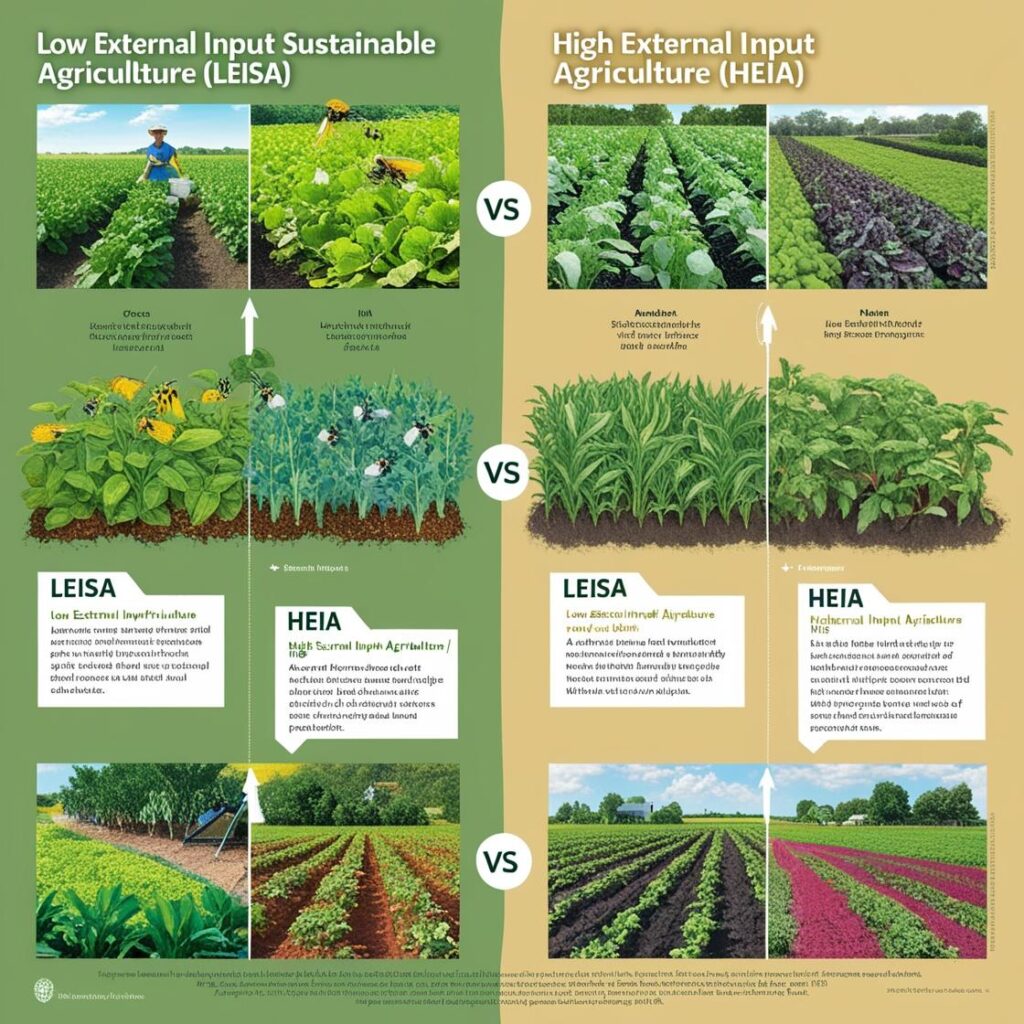
About Us
Welcome to Agriculture Novel, your go-to source for in-depth information and insights into the world of agriculture, hydroponics, and sustainable farming. Our mission is to educate, inspire, and empower a new generation of farmers, hobbyists, and eco-conscious enthusiasts. Whether you’re interested in traditional farming practices or modern innovations, we aim to provide comprehensive guides, expert tips, and the latest updates in agriculture and urban farming.
At Agriculture Novel, we believe in the power of knowledge to transform the way we grow, sustain, and nourish our world. Explore our articles on topics like Fruit Growing Guide, Hydroponics, Plant Deficiency Guide, and more.
Thank you for joining us on this journey towards a greener, more sustainable future!
About Agronique Horizon
At Agronique Horizon, we specialize in delivering comprehensive digital marketing and web development solutions tailored for the agriculture and hydroponics industries. From custom website design and app development to social media management, we provide end-to-end support for brands aiming to make a meaningful impact. Our team also offers innovative solutions for the real estate sector, bringing precision and visibility to your projects. Learn more about our services here and discover how we can elevate your digital presence.

